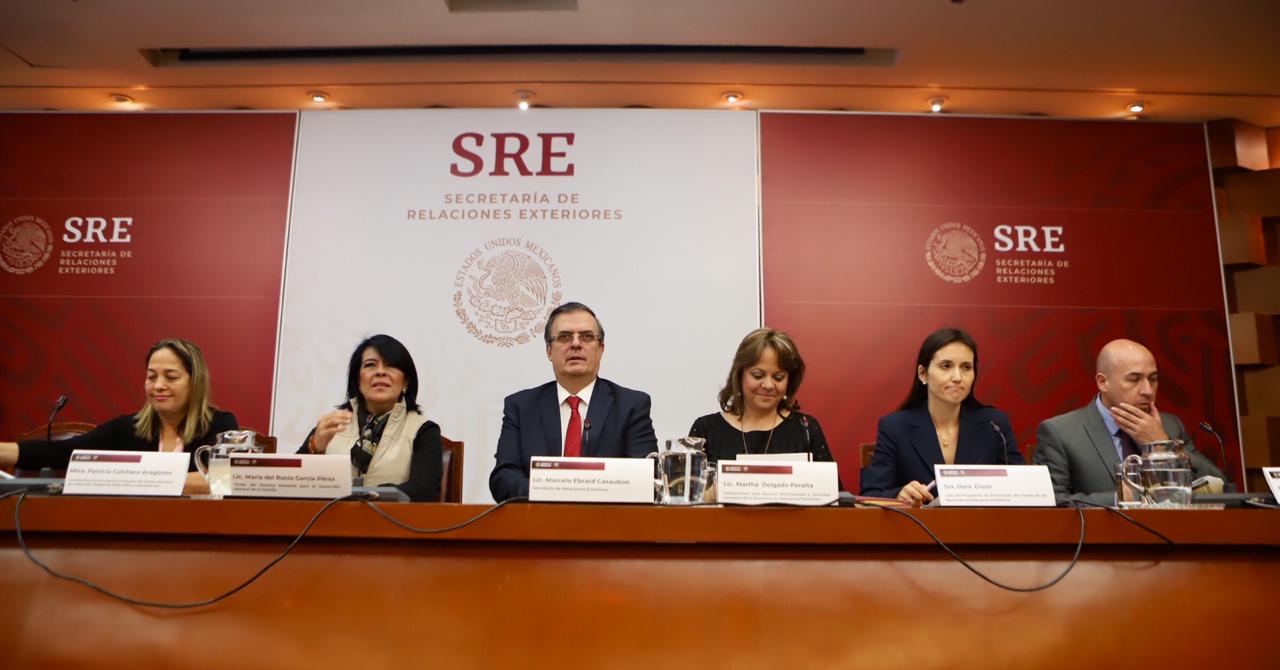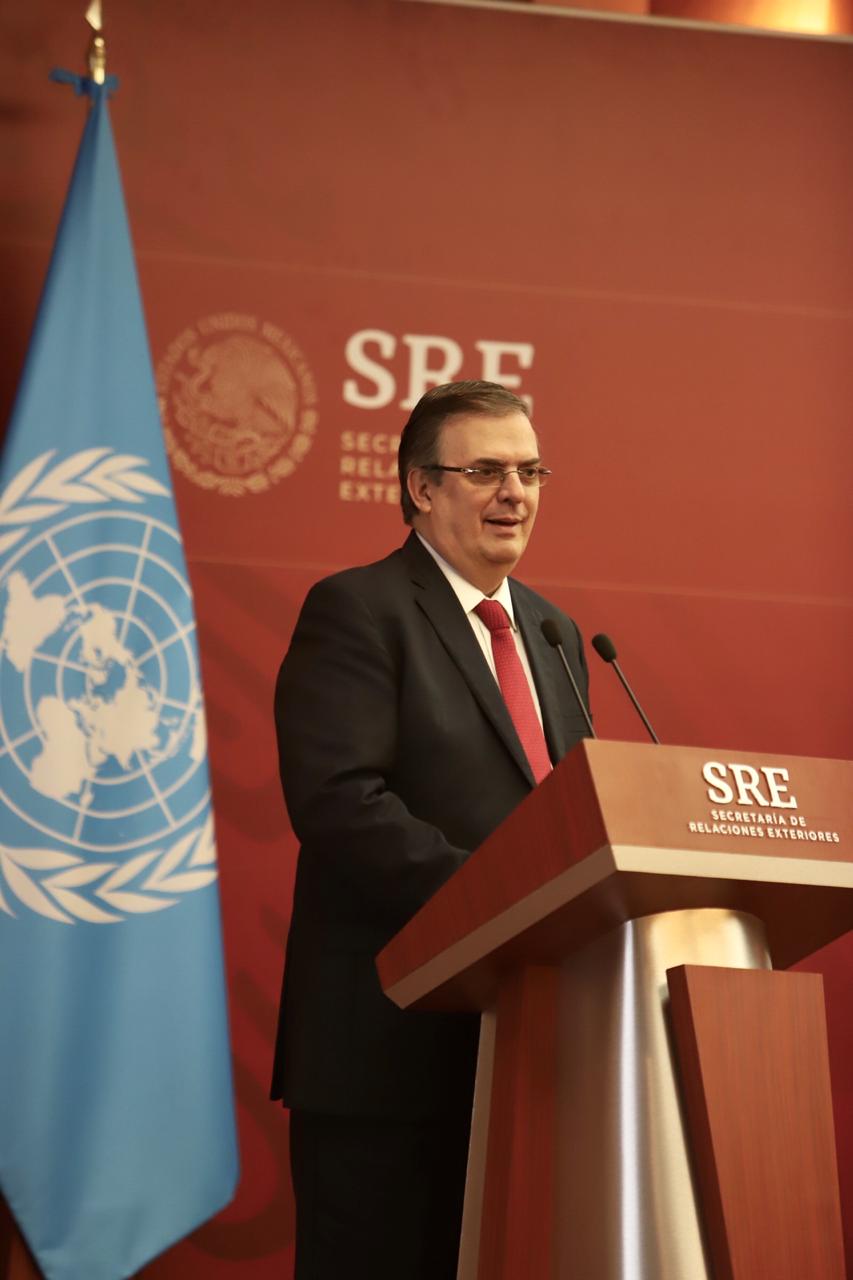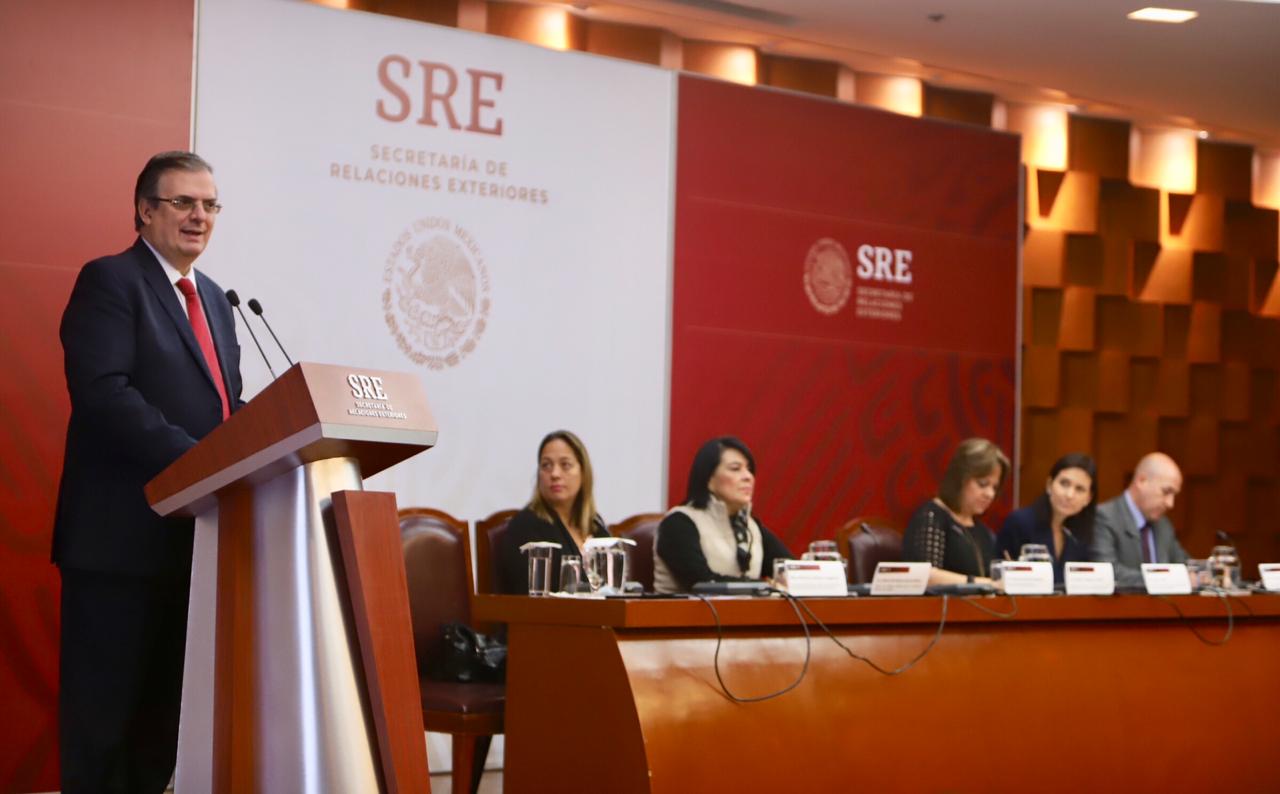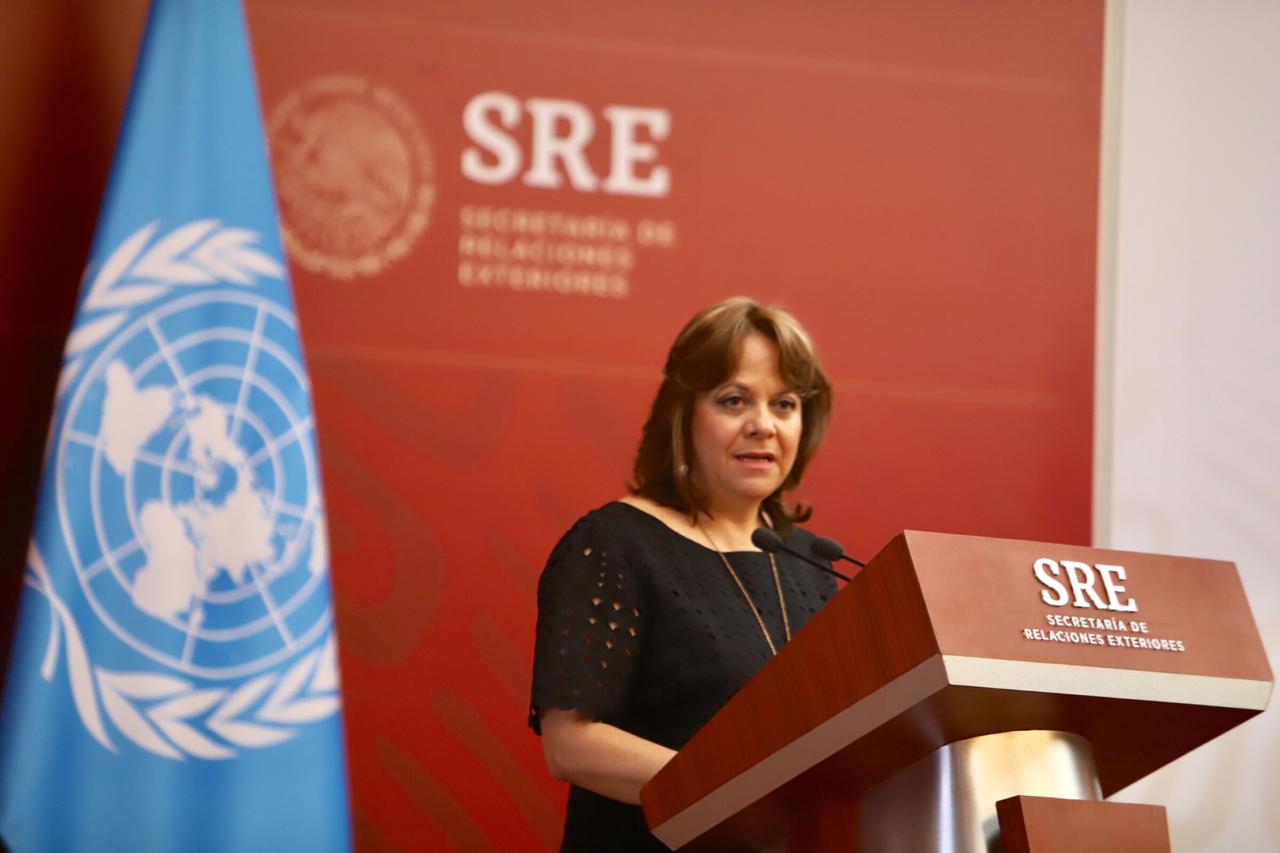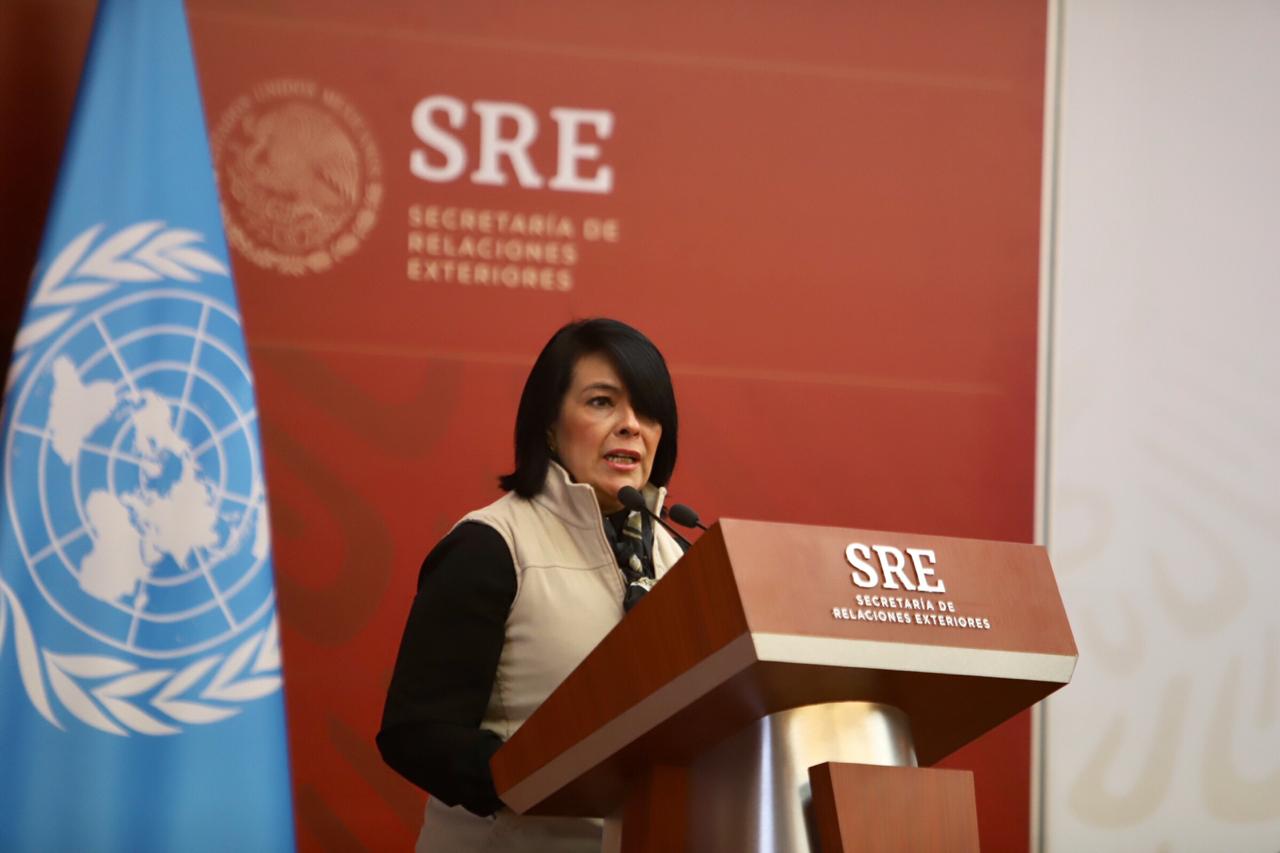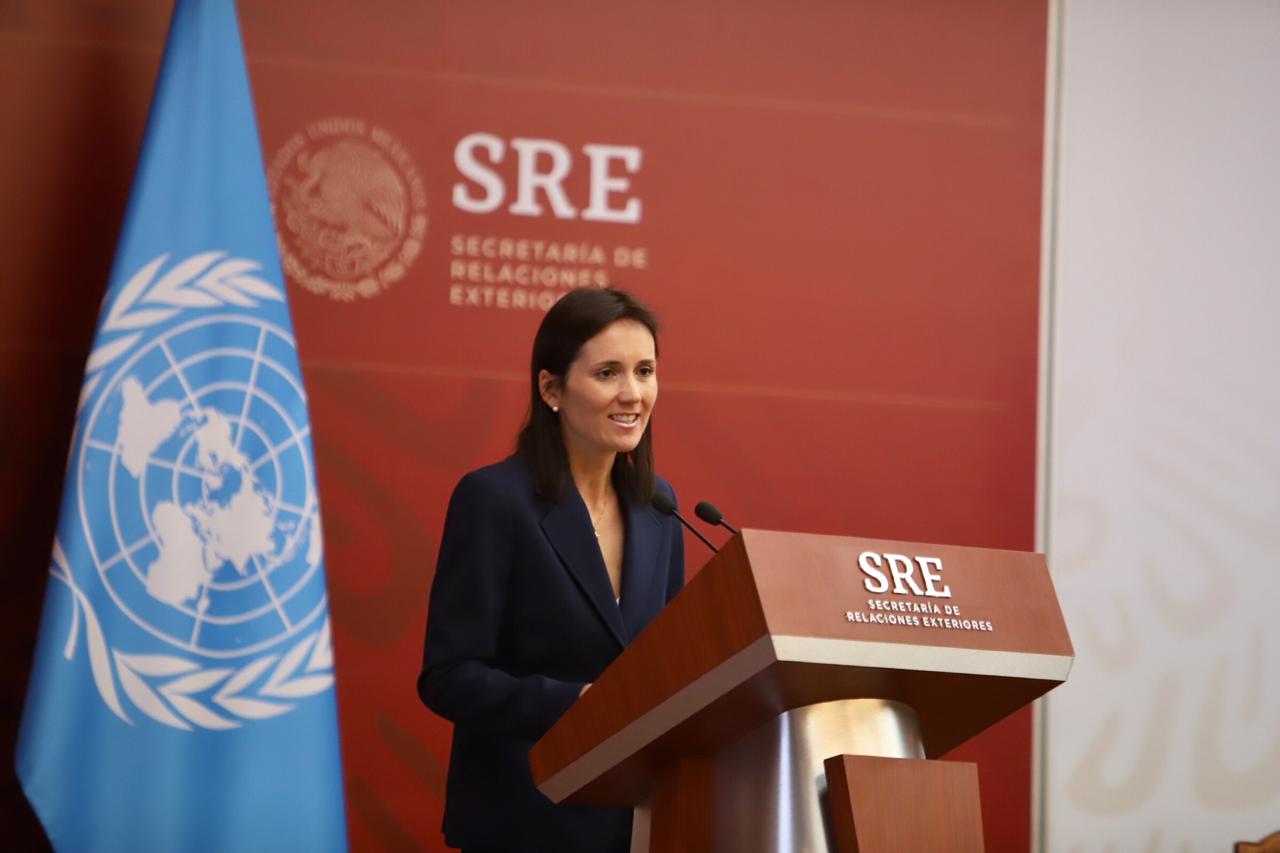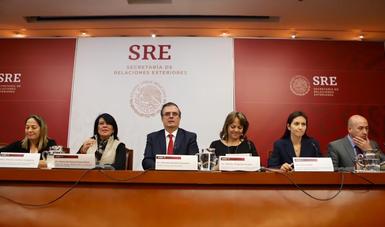The National System for Integral Family Development (DIF), United Nations Children's Fund (UNICEF), and the Foreign Ministry today presented a guide for implementing an alternative care model for children who are migrants, asylum-seekers and refugees in Mexico.
The model recognizes that, although the circumstances faced by migrant children may vary, they are a vulnerable group and need specialized attention to ensure their rights, address their specific needs and offer them opportunities and a way of life.
At the presentation, Secretary Marcelo Ebrard said the Government of Mexico takes very seriously what it is seeing on a day-to-day basis. "We are dealing with new developments and we have to prepare ourselves very specifically to take care of migrant children and adolescents. The model provides us with a way forward. It's a compass for a very complex, very difficult process, but one that must be addressed. And it must be addressed like this, with an alternative approach to the care of these children."
The Undersecretary for Multilateral Affairs and Human Rights, Martha Delgado, said that Mexico's migration strategy is on the right track, but needs to be more effective and implemented more quickly in order to ensure the rights of this vulnerable group. The alternative care model will be a key part of dealing with the increased number of unaccompanied migrant children in Mexico.
The model reflects Mexico's policy of comprehensively protecting the rights set forth in the General Law of the Rights of Children and Adolescents and is in line with the UN guidelines for the alternative care of children. It has four stages: 1) identification; 2) first reception; 3) second reception, and 4) discharge (reintegration or assistance with independent living). It is based on the highest standards for children's human rights and comprehensively ensures the best interests of the children, as a right, as a principle and as a procedural rule.
The national head of the DIF, María del Rocío García Pérez, said that the priority of the institutions and organizations involved in creating the model was to provide care for the unaccompanied migrant children, to ensure their right to live as a family and their integration into the community, and to help them enjoy a productive future. She said, "Our shared goal is to open new possibilities to those who seem not to have any because they are in a place that is not where they came from."
Dora Giusti, head of the UNICEF Child Protection Program, said that the challenge and opportunity lie in making the model into a reality throughout the country. The goal is to ensure that all unaccompanied migrant children and adolescents receive the protection that is their right, as well as legal advice and representation. They are also provided with a secure place in one of the alternative open-door options, either residential or with a family, both of which are community-based. All of these options are alternatives to detention.
The model seeks to provide guidance and tools that comply with international and national regulations and can be replicated in all of Mexico's states. Mexico is taking the first steps towards offering protection, care and a productive future to migrant children.
Present at the event were Javier Pérez Durón, head of the unit within the Attorney General's office in charge of investigating crimes against migrants; Patricia Colchero Aragonés, Information and Research Coordinator of the National System for the Integral Protection of Children and Adolescents; and Andrés Alfonso Ramírez Silva, Coordinator of the Mexican Commission for Refugee Assistance (COMAR).
The Government of Mexico reaffirms its commitment to multilateralism, and to the highest human rights standards for migrants that enter the country.
See the report: "Alternative care model for child migrants, asylum-seekers and refugees in Mexico: an implementation guide"
https://www.unicef.org/mexico/informes/modelo-de -Care-alternatives
